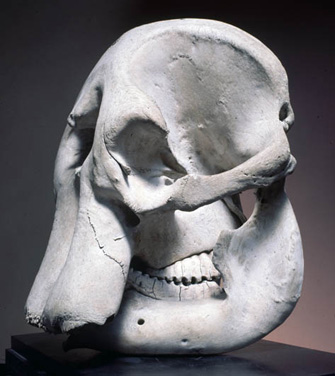 |
|
“Working Model for Sheep Piece” (1971) © Henry Moore Foundation |
Henry Moore’s highly popular and seemingly ubiquitous sculptures have never really appealed to me, but I couldn’t put my finger …
 |
|
“Working Model for Sheep Piece” (1971) © Henry Moore Foundation |
Henry Moore’s highly popular and seemingly ubiquitous sculptures have never really appealed to me, but I couldn’t put my finger on why, so I went to see “Henry Moore: The Studio” at the Musée Rodin to try to find out.
The first surprise was the room full of preparatory drawings and scale models. No sculpture springs to life fully formed, of course, but it was interesting to see how much research and study went into the making of Moore’s works. During the first quarter-century of his career (he lived to be 88), he would take an idea and work it out thoroughly in sketches before committing himself to carving stone or wood. “I would be having many more ideas than I was able to carry out,” he said, “and I would get rid of ideas, if that is the right phrase, by drawing to prevent them from blocking each other up.”
Many of these intriguing sketches, full of variations on a theme and complete with color and shading, are surprisingly finished. Later, Moore turned to working out his ideas by making small plaster or terracotta models, many of which are on show here, along with a number of large models.
Another room is full of many objects from Moore’s studio displayed in glass cases (clearer labeling would have been in order here). Among the many small models of sculptures and other miscellany are two strange artifacts: the skulls of an elephant and of a rhinoceros, whose forms
 |
|
The elephant skull Henry Moore kept in his studio. |
very clearly inspired many of his works, most notably in this exhibition one of the two large models in the garden, “The Arch” (1969), while other works, like the monumental “Three Way Piece Number 1: Points” (1964-65) calls to mind the massive forms of the animals themselves. This work is a marvel that deserves a few walk-arounds to appreciate its heavy mass and wonderfully scratched and gouged surface.
I left the show with a greater appreciation of Moore and the realization that his fully abstract works inspired by natural, organic forms appeal to me much more than those semi-abstract mother-child and family groups he made so many of and which strike me as sentimental and cold at the same time (their offspring, the abstract “Internal/External” pieces, in which one sculpture is sheltered inside another, are far more interesting).
There are only a couple of weeks left to see this show, and I do recommend it strongly. Try to avoid going on Sunday, when the crowds become overwhelming (a brawl nearly broke out last Sunday when a security guard tried to merge two separate lines of visitors waiting to get into the show into one).
Musée Rodin: 79, rue de Varenne, 75007 Paris. Métro: Varenne or Invalides. Tel.: 01 44 18 61 10. Open Tuesday-Sunday, 10am-5:45a. Admission: €7. www.musee-rodin.fr
Support Paris Update by ordering books from Paris Update’s Amazon store at no extra cost. Click on your preferred Amazon location: U.K., France, U.S.
Reader Reaction: Click here to respond to this article (your response may be published on this page and is subject to editing).
More reviews of Paris art shows.
© 2011 Paris Update
